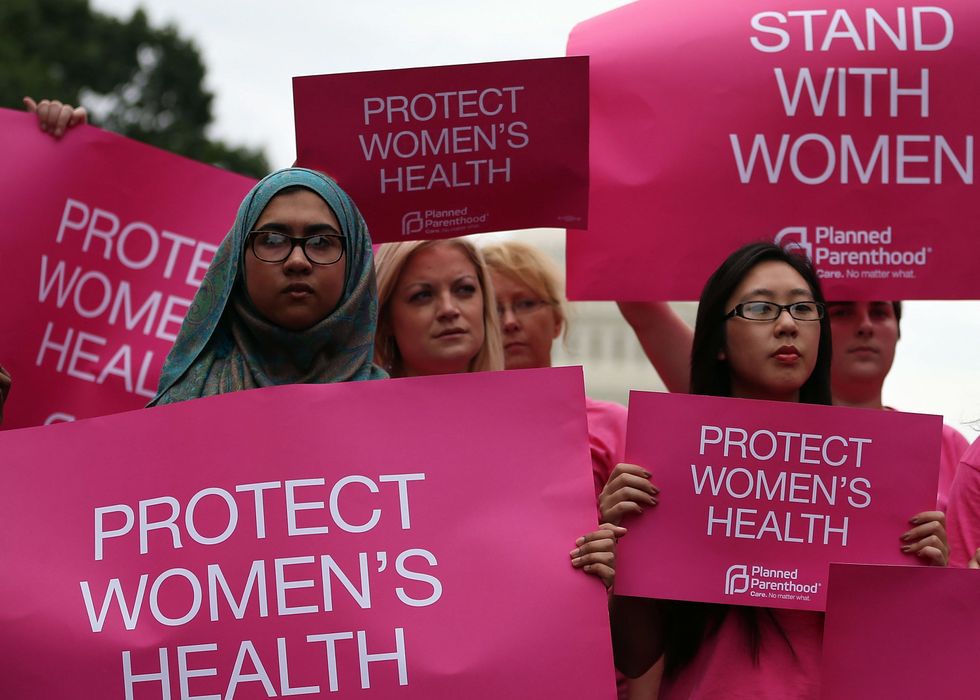This week has been a depressing setback for the pro-choice movement, with Ohio, Alabama, and Georgia passing new anti-abortion bills. To recap:
Alabama's new bill signed by Alabama Gov. Kay Ivey on Wednesday, May 13th, outlaws abortion for almost every circumstance, with the only exceptions involving the health of the mother and for fetuses with "fatal anomalies" that would make them unlikely to survive outside the womb. Rape and incest are not exceptions to Alabama's ban and doctors who perform abortions when this bill takes effect will face up to ninety-nine years in prison, making it the most restrictive abortion law in the country.
Georgia's new "heartbeat bill" signed by Georgia Gov. Brian Kemp on Tuesday, May 13th, outlaws abortion as soon as a fetal heartbeat can be detected-- which can occur as early as six weeks into a pregnancy, long before a woman even knows she's pregnant. This bill does allow exceptions for rape and incest, as long as they are reported to the police first. The bill also moves to declare unborn children as a class of living people with "full legal recognition." Which means that, legally speaking, aborting a fetus in Georgia constitutes committing a homicide. And unlike Alabama's bill, both doctors and women who perform an abortion under Georgia's bill can be charged with imprisonment or death-- even if the woman travels out of state for it. And, the real kicker, if a woman miscarries for any reason, she could be charged with second-degree murder.
Ohio recently signed its own "heartbeat bill" into law by Ohio Gov. Mike DeWine on April 11, 2019, that allows abortion up until a fetal heartbeat can be detected. Now, its legislators are now working on another abortion-restriction bill that would stop most insurance companies from covering abortion services unless the procedure is necessary to save the mother's life. The bill defines this kind of abortion as a "nontherapeutic abortion." However, "nontherapeutic abortion" also includes "drugs or devices used to prevent the implantation of a fertilized ovum seed to prevent the implantation of a fertilized ovum." Which includes birth control-- since it's used to prevent an egg from being fertilized by a sperm.
The pill, the patch, the ring, and an IUD, would all be considered abortion according to Ohio's proposed bill. Not only that but the definition of "nontherapeutic abortion" also suggests that a fetus's life begins as soon as an egg is fertilized. Which is an even more wide-ranging definition than the heartbeat bills, which indicate that life begins with a heartbeat. This would redefine Ohio's current abortion legislature, ban insurances from covering common methods of birth control, and potentially penalize women for drug-induced abortions.
Trump has already targeted birth control previously in his term. In 2017, Trump eliminated the Obama administration's Affordable Care Act's that required all insurance plans to "cover birth control without a co-pay or otherwise ensure access to birth control coverage for women whose employers or schools can legally opt out of providing coverage." On October 6th, 2017, Trump's administration ruled that any employer, school, or other entity has the right to opt out of providing contraceptive coverage for religious or moral reasons, since the rule "rejects the notion that there is a connection between coverage for birth control and reducing unintended pregnancy," according to Planned Parenthood.
In 2018, Trump's administration took aim at the Title X program-- which is the U.S.'s national program for affordable birth control and reproductive health care and is the only federal program dedicated to birth control access. Title X is meant to ensure that every person has access to basic, preventive reproductive health care, such as birth control, cancer screenings, STI testing and treatment, and well-woman exams, no matter their income. On February 23, 2018, Trump issued a new call for funding applications that radically shifted the Title X's priorities by preventing women from going to expert reproductive health care providers and instead of pushing them to go to providers that emphasize abstinence-only contraceptive and rolling back access to the most effective forms of birth control.
"The Trump-Pence administration is quietly taking aim at access to birth control under the nation's program for affordable reproductive health care, which more than four million people rely on each year," said Dawn Laguens, Executive Vice President of Planned Parenthood Federation of America.
Also, birth control is used for a VARIETY OF DIFFERENT REASONS outside of contraception, such as preventing acne, bone thinning, cysts in breasts and ovaries, endometrial and ovarian cancers, iron deficiency, and infections in the ovaries, fallopian tubes, and uterus. It also helps to regulate irregular periods, and prevent conditions like PCOS, endometriosis, and low estrogen issues.
"We're talking about a fundamental right -- to be able to decide whether and when you want to have children," said Cecile Richards, President, Planned Parenthood Federation of America.
It's not surprising that a study by Washington University in St. Louis found that giving women free birth control reduces abortion rates by sixty-two to seventy-eight percent, compared to the national rate (2012). So if Ohio's truly trying to prevent abortion, they're going about it all wrong.






















